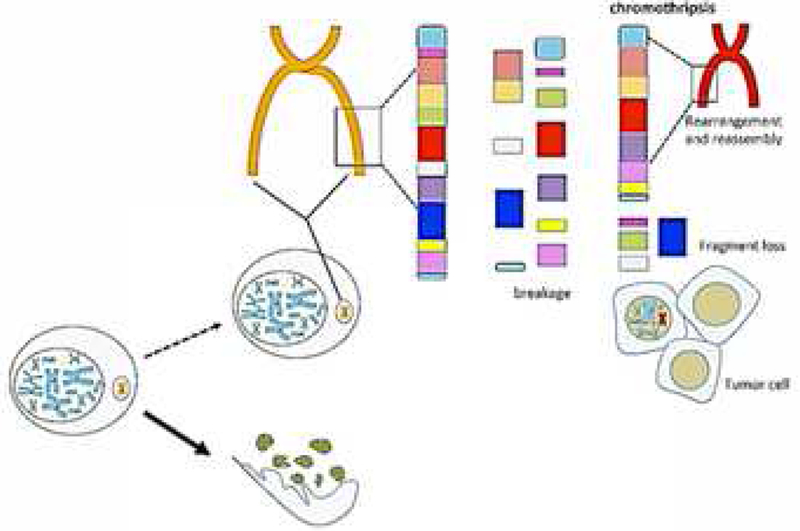Figure 1.

Chromothripsis and tumor development. DNA damage may lead to the formation of micronuclei, extranuclear structures containing a single chromosome, surrounded by a nuclear membrane. During the interphase, the micronuclei membrane disrupts leading to chromosome shattering because the DNA is fragmented by exposure to cytoplasmic nucleases. The resulting chromosome fragments –or some of them- can be re-localized in the nuclei during subsequent mitoses and re-ligated at random by the non-homologous-end-joint (NHEJ) repair system. This process, known as chromothripsis, generates aberrant chromosomes with complex, random, rearrangements, leading to a very high number of genetic alterations within a few cell cycles, and to the possible emergence of malignant cell clones.
